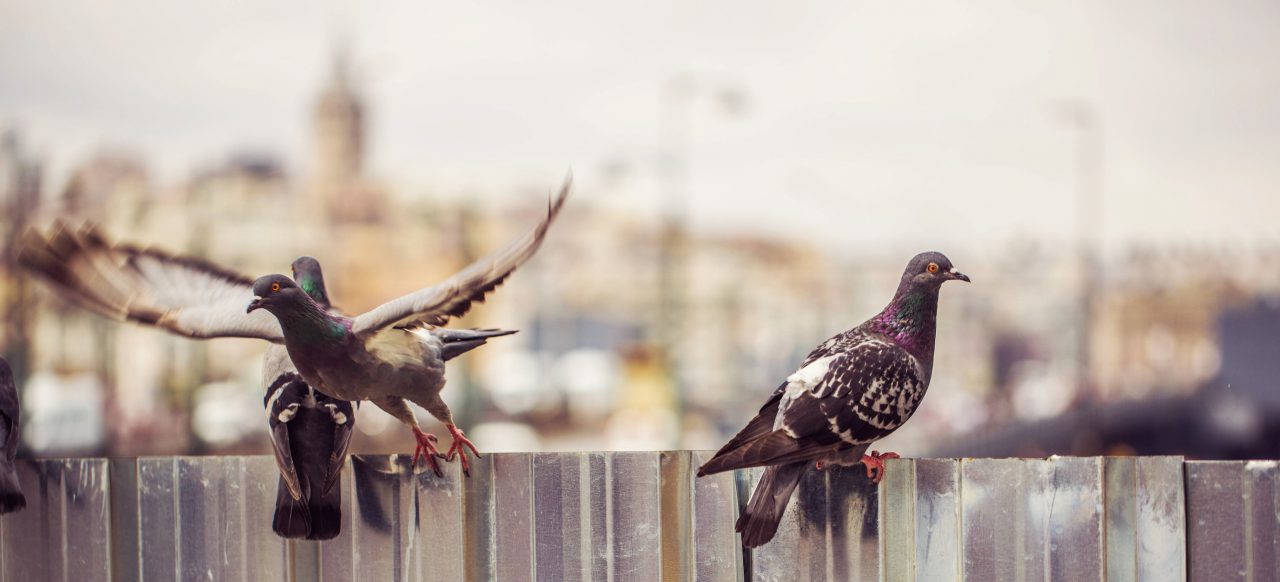It was strictly by chance that we became involved in racing pigeons.
In the late 1950s, when we lived in Antelope Valley, a part of California’s Mojave Desert, our little daughter Carolyn wanted to adopt a stray pigeon. We agreed, but not knowing much about pigeon requirements, I inquired at the Lancaster feed store. There, after selling me some grain, the salesman recommended that for further information I contact Glen Morse, a local pigeon buff. I did call him; he told me he was president of the Antelope Valley Pigeon Racing Club, and invited me to visit his backyard loft. I accepted and was totally intrigued by all he told me about the care, training and racing of his homing pigeons.
The upshot of that encounter was that after my husband Joe constructed a proper loft, and we’d purchased four pairs of homers, I joined the racing club and its parent organization, the American Racing Pigeon Union. At my first local club meeting, it turned out that I was the only female. The eight or so other members asked me to be their secretary. I agreed. The job mainly involved reporting racing results to the local newspaper.
Joe constructed our loft by converting an old, unused shed behind our house. He built perches and a row of nest-boxes on the walls inside and closed the open front with chicken wire – an entry door for our use – and, near the top, a “flight trap” for the pigeons’ comings and goings. The trap consisted of a rectangular opening curtained with stiff wires that could swing inward or outward, and be locked either way. On the outer side there was a small landing platform. Homing pigeons tend to return to the loft in which they were born; so, for breeding purposes, we confined to the loft the pairs we had purchased and trained only their offspring to use the trap.
The training involved Joe’s gently pushing a young homer from inside the loft out through the hanging wires onto the platform. I’d receive the pigeon as it came through, hold it briefly, then push it back through the wires into the loft. The process had to be repeated a number of times with each bird.
Newborn pigeons develop very quickly. In fact, the permanent identifying leg-band must be applied within the first three or four days after birth, or it won’t fit over the fast-growing claw. Our son named several of the young birds for Los Angeles Dodgers players, including Sandy Koufax, Don Drysdale, Wally Moon and Johnny Roseboro.
After the birds learned the workings of the trap, we allowed them to fly out and around the loft area to become familiar with its location. We withheld food before releasing them, then filled the feeding trays on the loft’s floor. When hungry, they returned to the loft. We were told that hunger enhances the homing instinct.
But pigeons also fly home for other reasons. One afternoon I saw a hawk chase one of our birds straight through the trap into our loft. I raced in after them, freed the struggling pigeon from the hawk’s grasp, and threw the latter out the door. It floundered on the ground, then flew away. The pigeon died, and I was left with a nasty hawk-bite on my right hand.
Hunters also were a threat. The dove hunting season invariably coincided with pigeon racing season. We posted a “No Hunting!” sign on our property, hoped for the best, and proceeded to train our birds for the upcoming races.
In order to participate in a race and determine the flight-time of each bird, we had to arrange for a survey that would prove the exact distance between loft and club headquarters. It also was necessary to purchase a time clock for recording the hour and minute each racer re-entered the loft.
When our young birds appeared to be familiar with the location and surrounding areas of the loft, they were ready for race-training. We began by driving them in a pigeon-carrying case, made by Joe, to a parking lot a mile down the road. There, we released them. At first they pecked around in the gravel, then they took flight, circled for a few minutes to get their bearings, and headed straight for the loft. At that point we quickly drove home.
To our great relief, all five birds soon returned. After briefly perching near the loft, each flew through the trap to the grain and water reward. First mission accomplished!
On the following weekend, we repeated the process, but from five miles away. Next, the distance was 10 miles, then 15, 20 and 25. We were told that after a successful return from 25 miles, a homer was considered ready for its first race. The racing club was scheduled to participate in a forthcoming 50-miler, and we signed up for it.
The night before the race, with crated birds and time clocks, we gathered at the club headquarters. The clocks were synchronized and then locked. In Glen’s garage each pigeon was banded with a numbered removable leg band, and the number was officially recorded. Then all the birds were stowed in a few standard-sized crates. The crates were designed so they could be opened simultaneously at race time.
Later that evening, one of our club members transported the crates to a pick-up point off the freeway from Los Angeles. There they were loaded onto a big truck and driven to the site where the race would begin. En route, the truck also took on crates of birds from several other racing clubs. All would be released at dawn the next day.
For our club’s racers, the starting point was 50 miles north. For other clubs, depending on their location, race distances differed. The race might have been 75 miles for some, or 100 miles, or more. The members of each club competed only among themselves.
It was known that there was a lot of high-stakes betting, at least in large pigeon-racing clubs. Whether or not there was betting among our members, I never knew. In any case, I didn’t care.
The most exciting part of a race, of course, was the homecoming. We had known roughly when to expect the first arrivals and keep on the lookout. But when a local fellow racer phoned to say he’d had a returnee, our whole family went outside to scan the skies.
As soon as we spotted one, Joe – more adept at bird-handling than me – rushed into the loft. With the time clock close by, he caught the bird as it flew through the trap, removed its racing band, dropped the band into a slot in the clock, and then turned the key. The arrival time was thus recorded on the band. We repeated that procedure as each bird flew in.
By evening, when most of the racers had returned to their respective lofts, the club members met again around Glen’s dining table with time clocks in hand. We unlocked and opened the clocks one at a time, and the statistics on each band were recorded. Then, a member with special know-how calculated each bird’s speed to determine the winners. Once one of ours qualified among the top 10! Was it Sandy Koufax? I wish I could remember. In any case, it was a triumph for the Wood family.
After the initial 50-mile race, subsequent races were longer, and then longer. Our homers’ longest flight was 650 miles, from Klamath Falls, Ore. One of them did not return, having instead pursued a female contestant into her home loft, which was a considerable distance from ours. The owner of that loft phoned to inform us of the fact.
The wayward pigeon could have been returned to us, but we declined the offer, as within a few months we were to move from California to Alabama. Sadly, that move necessitated closing our loft. When the time came, we gave our flock of then close to 40 homing pigeons to various club members willing to take a few pairs for breeding purposes.
And so, regrettably, our pigeon racing days came to an end









